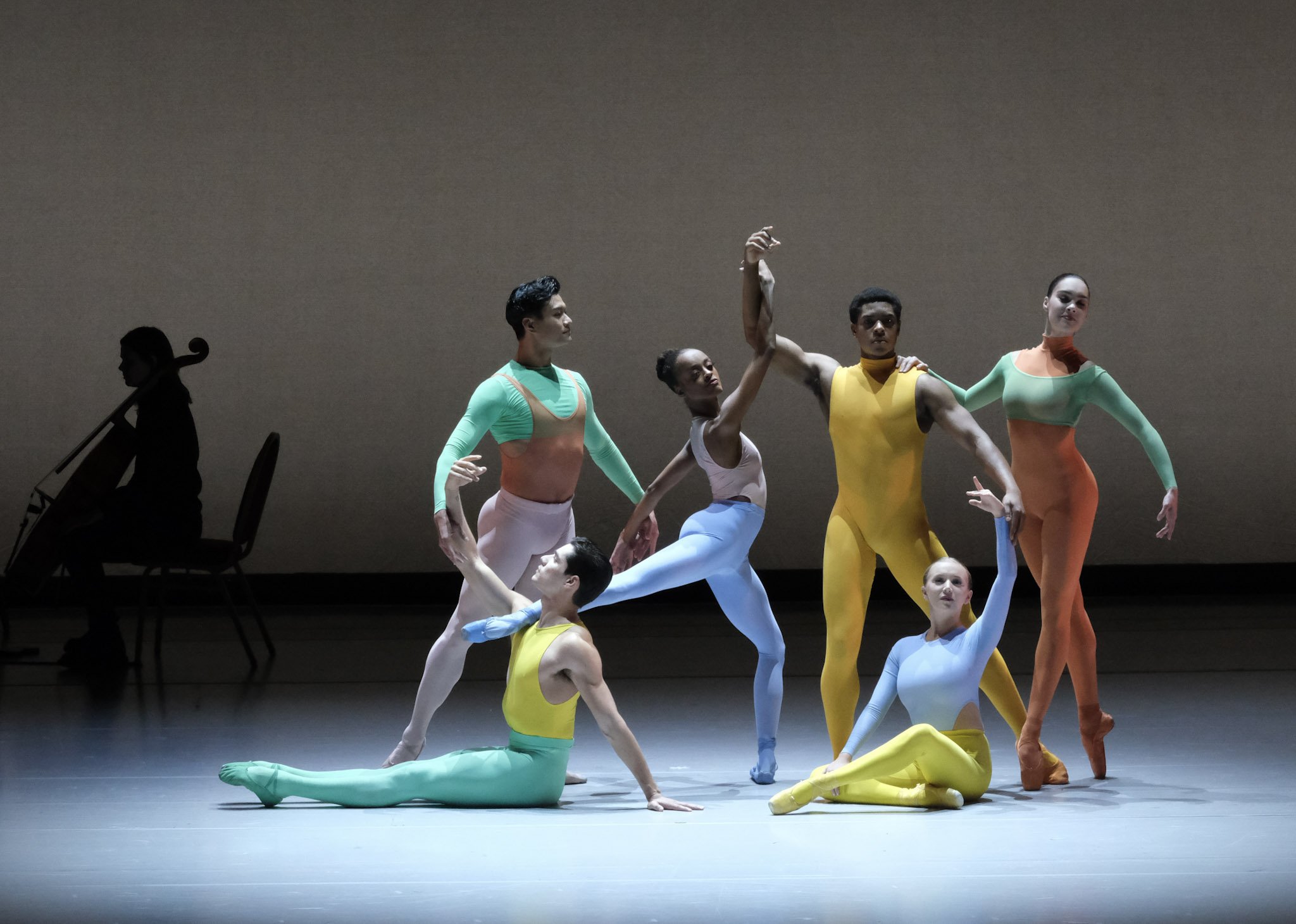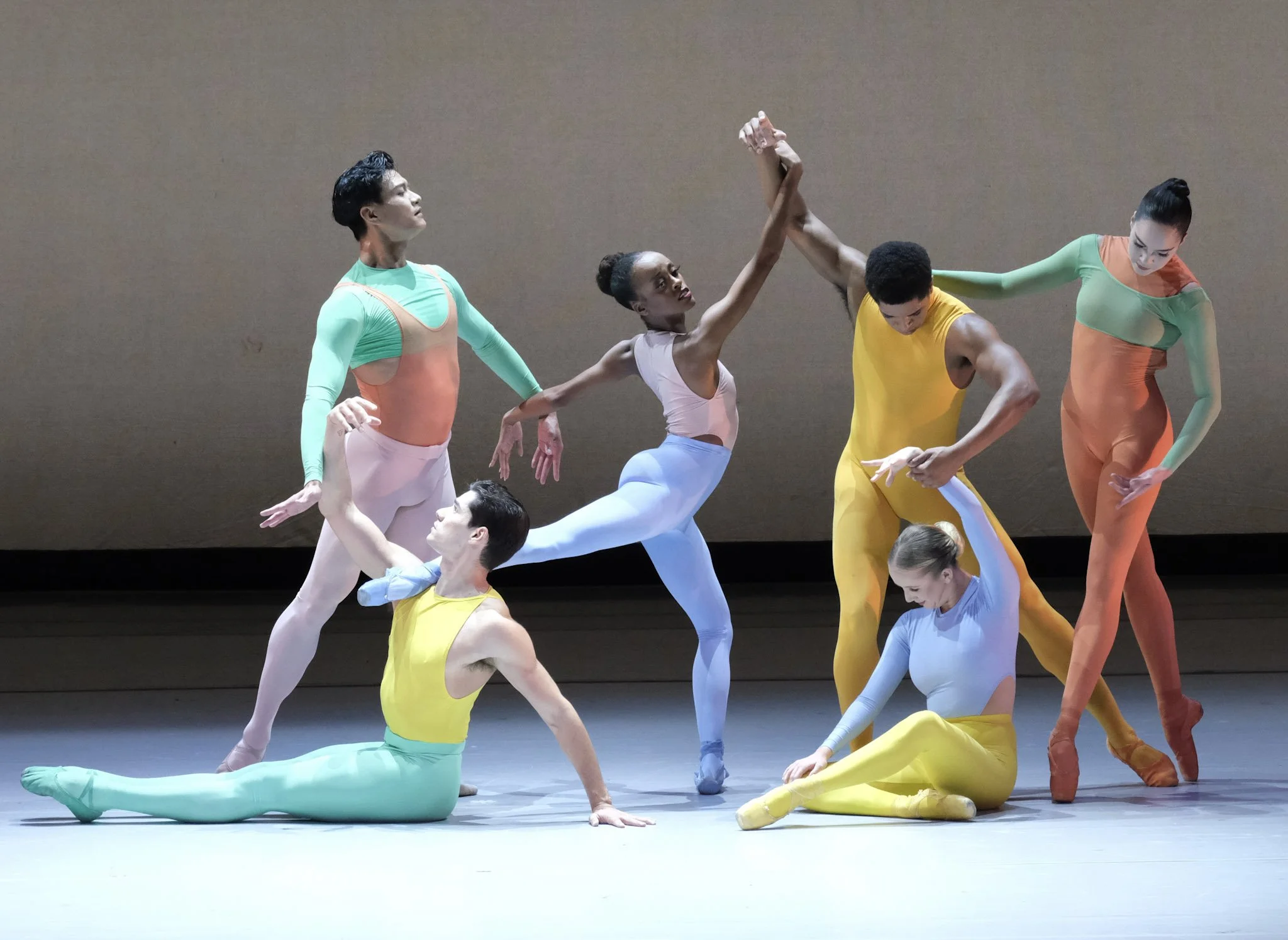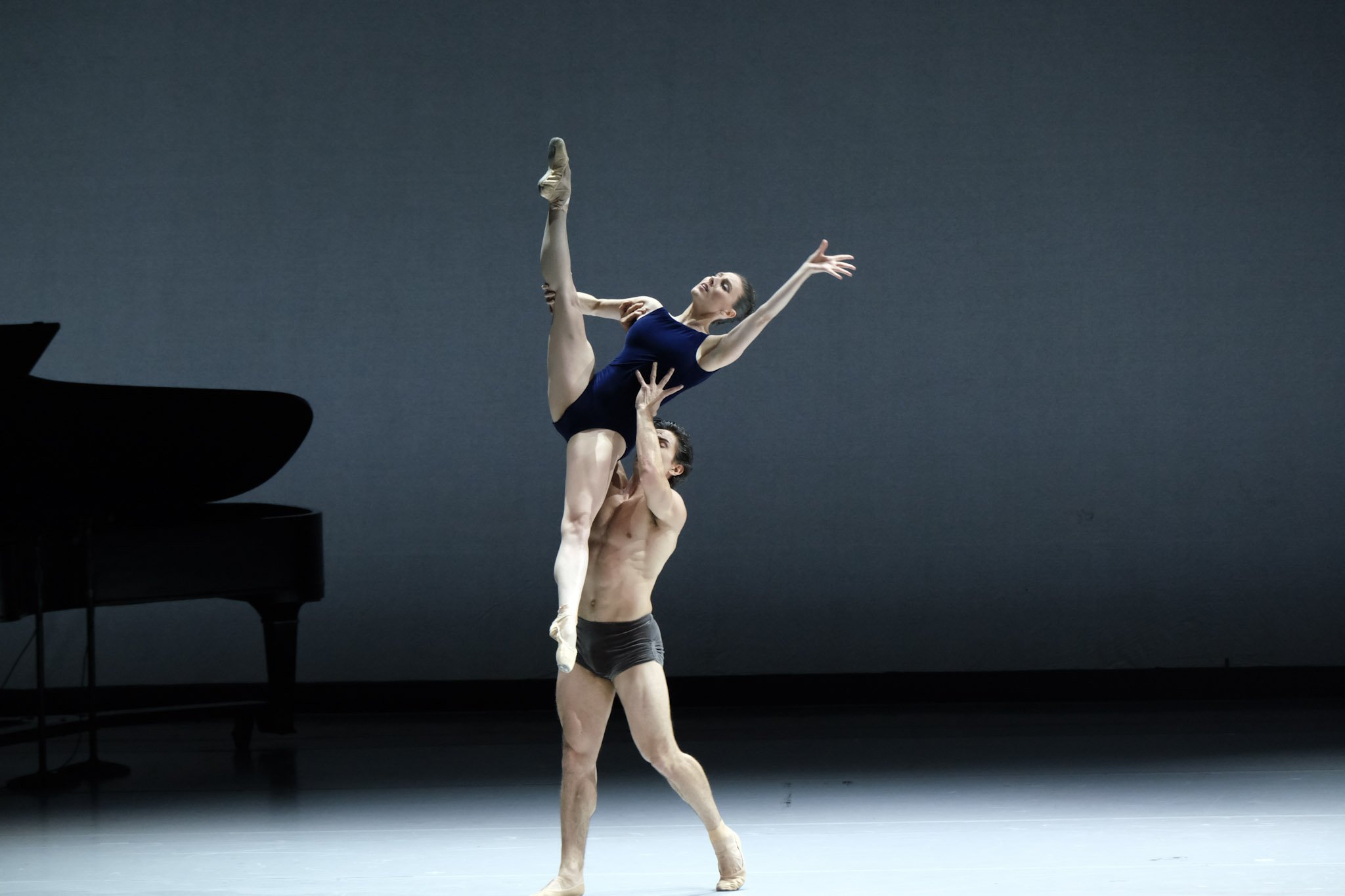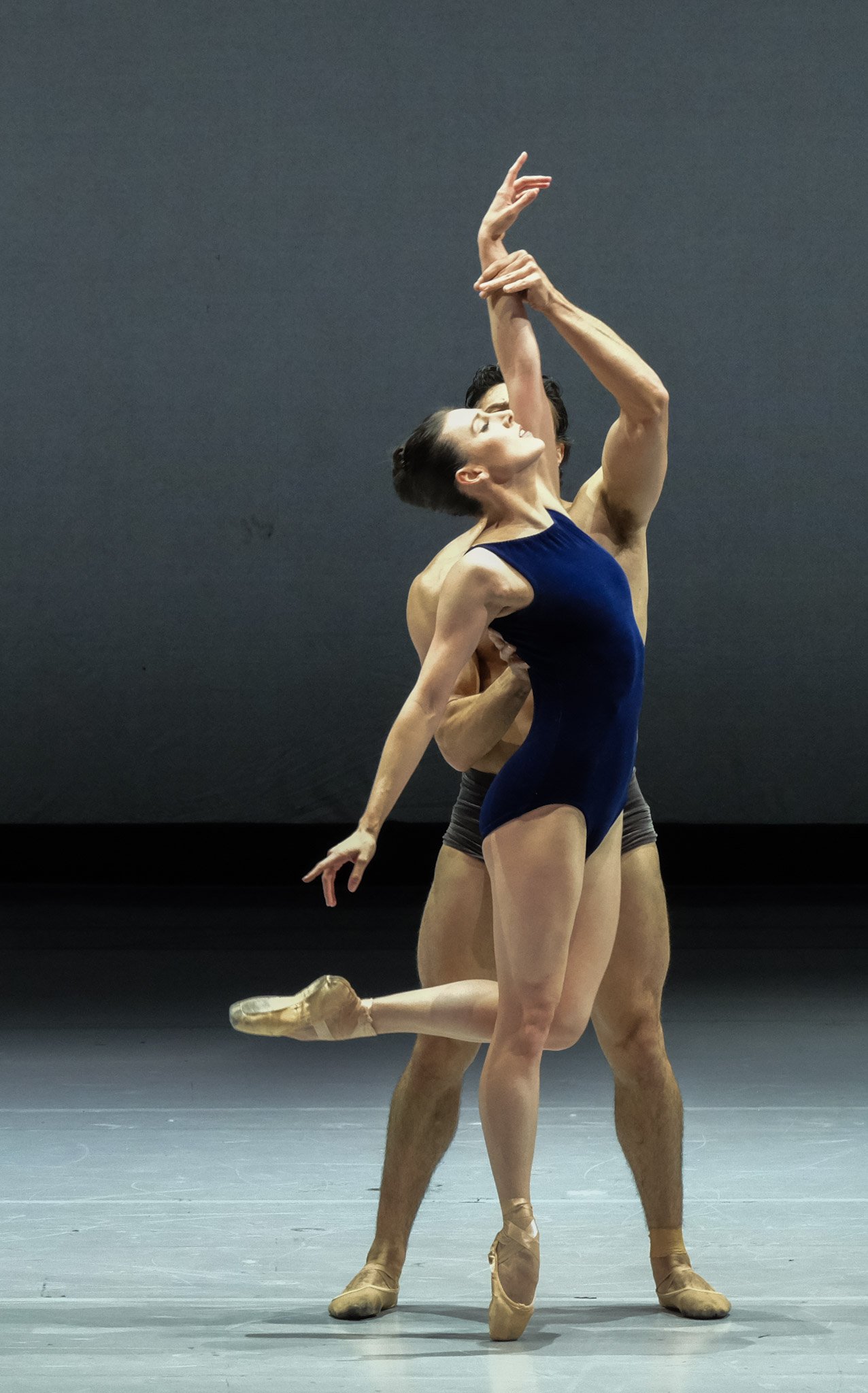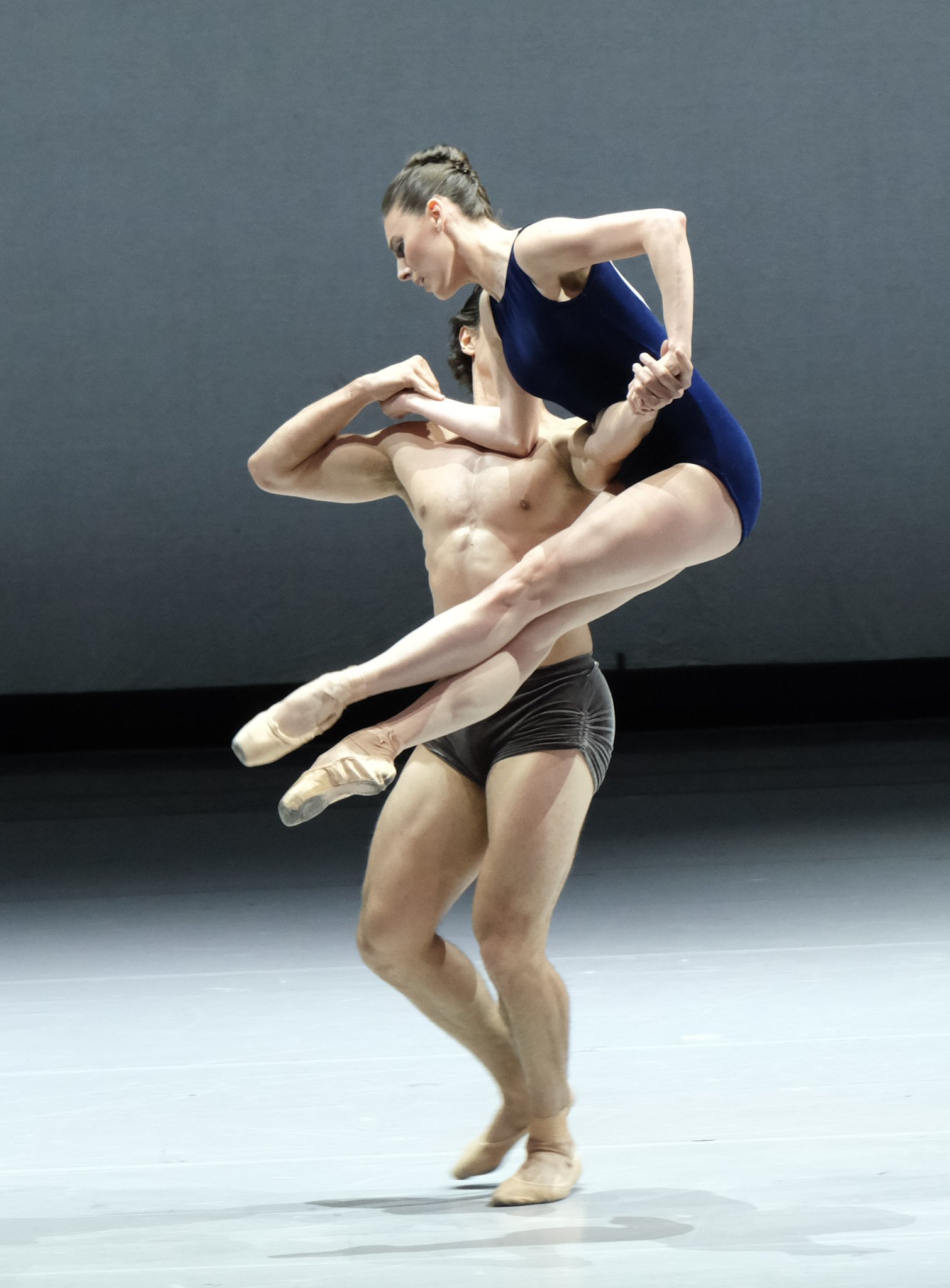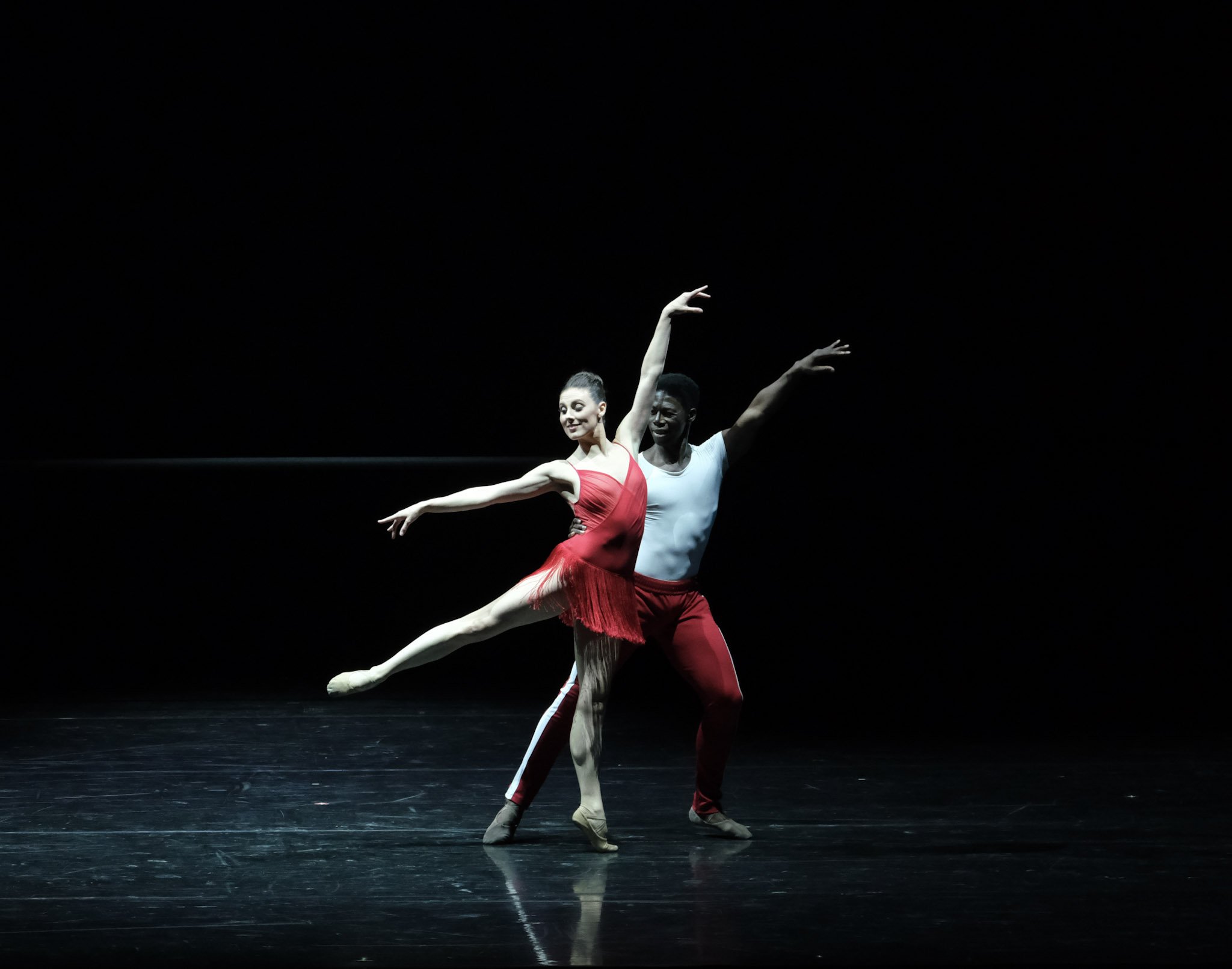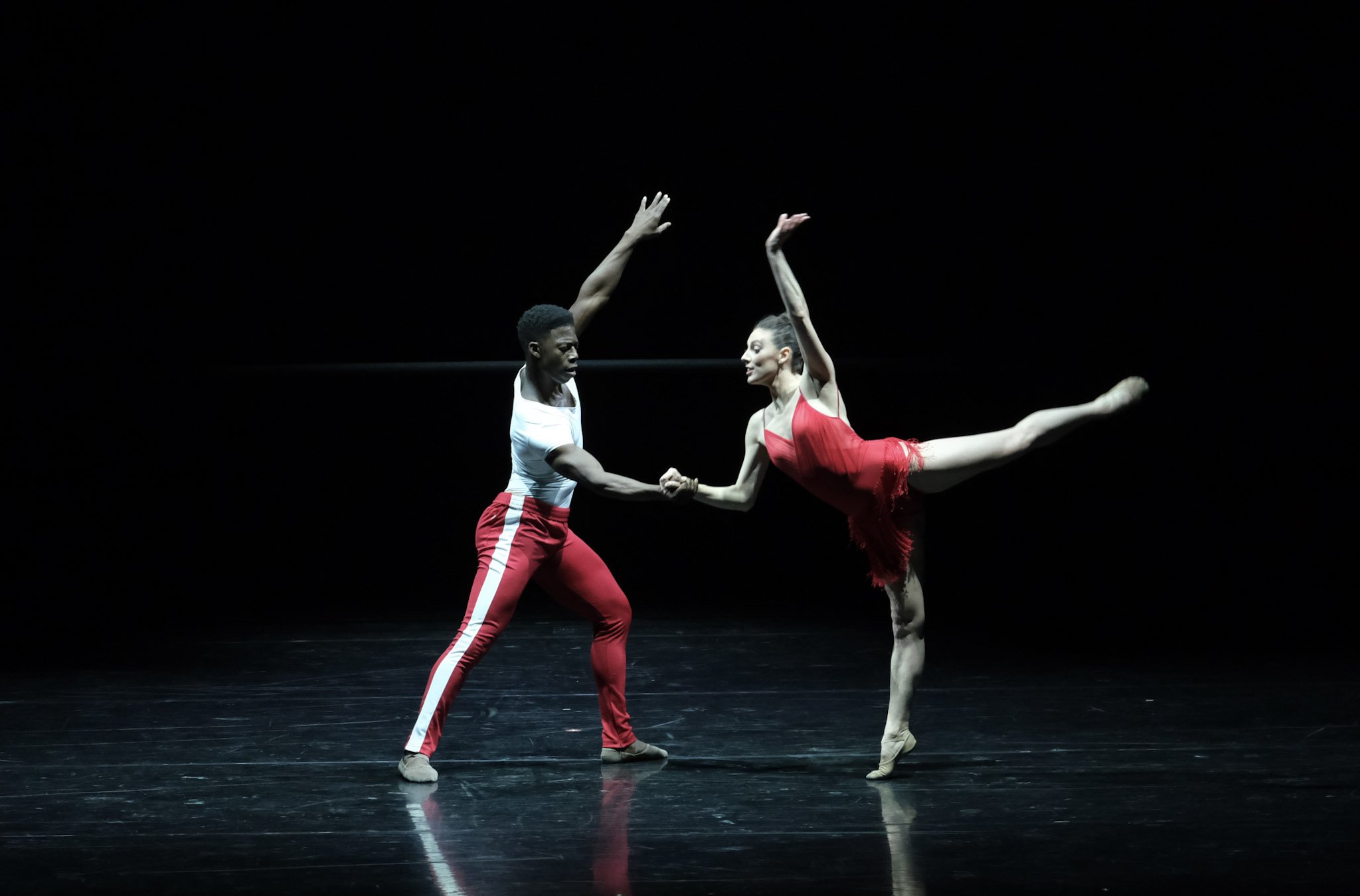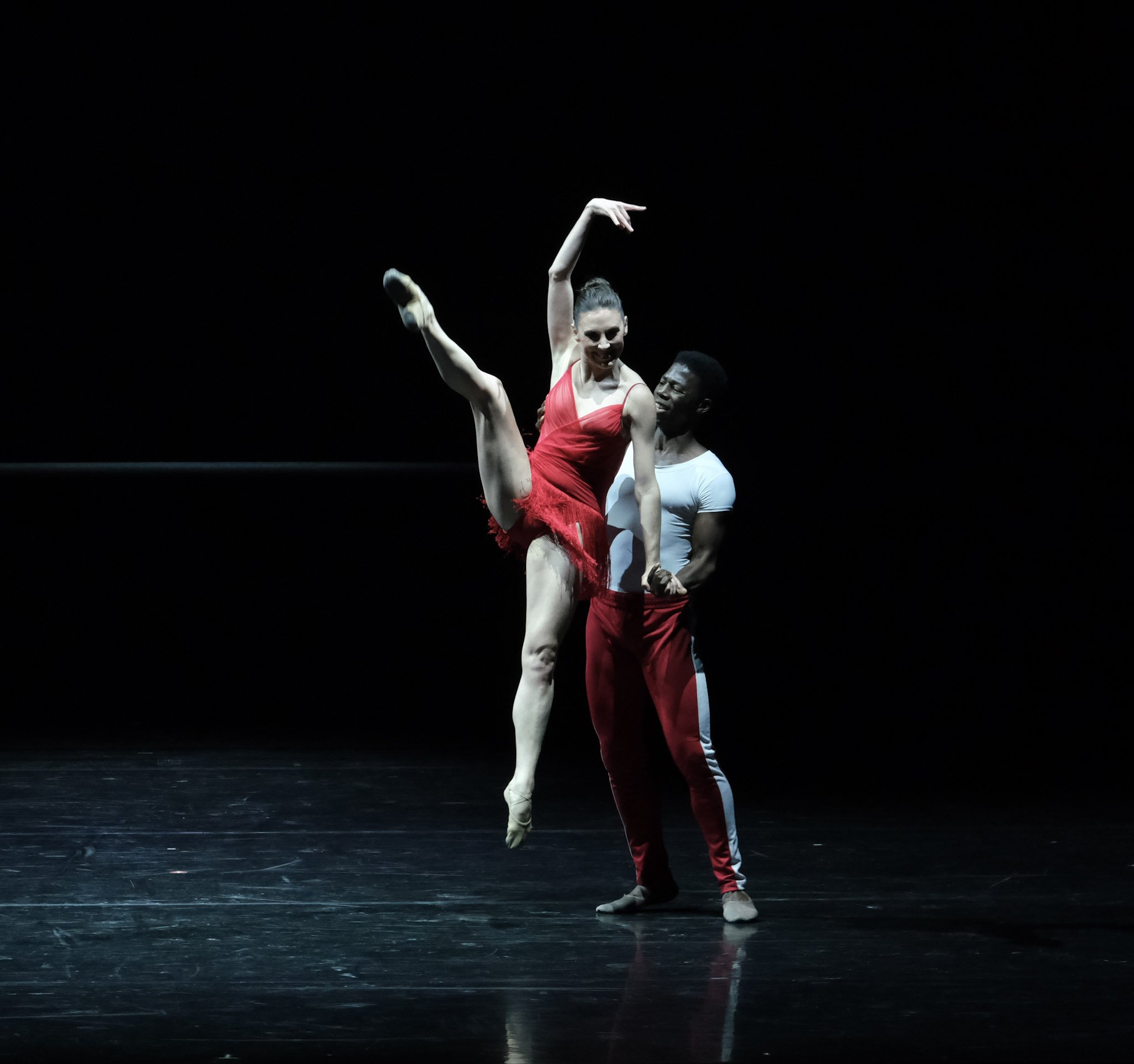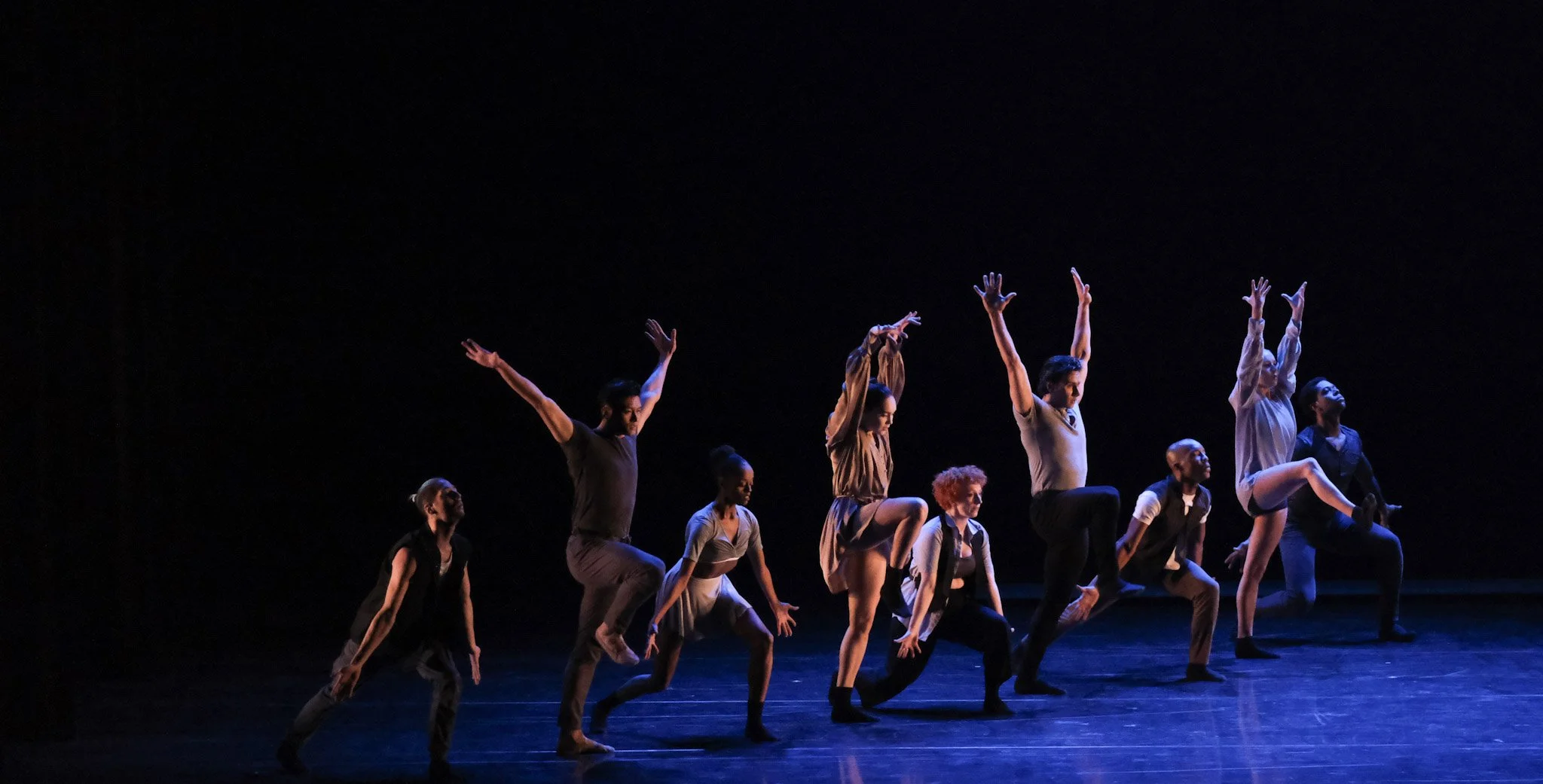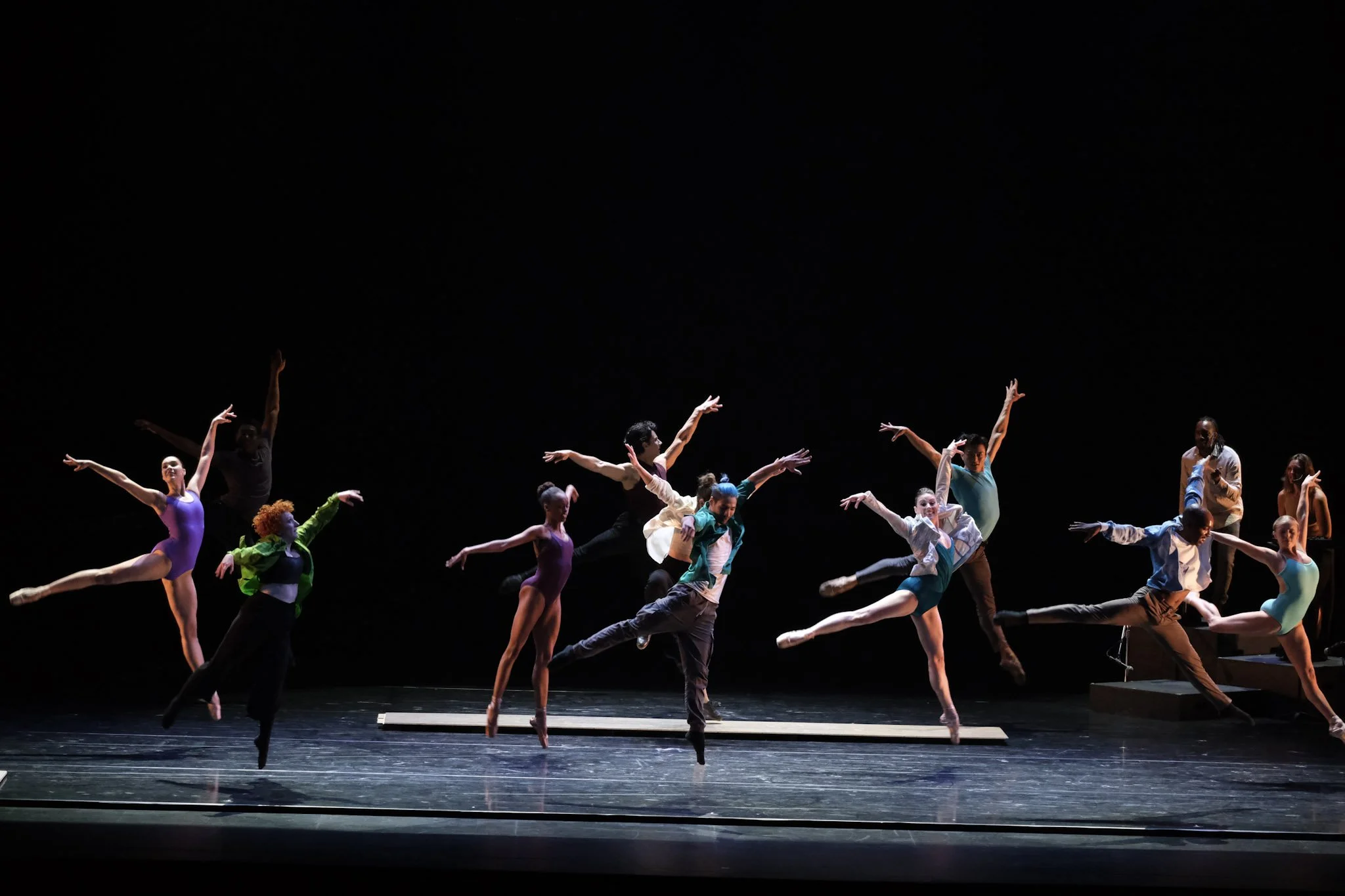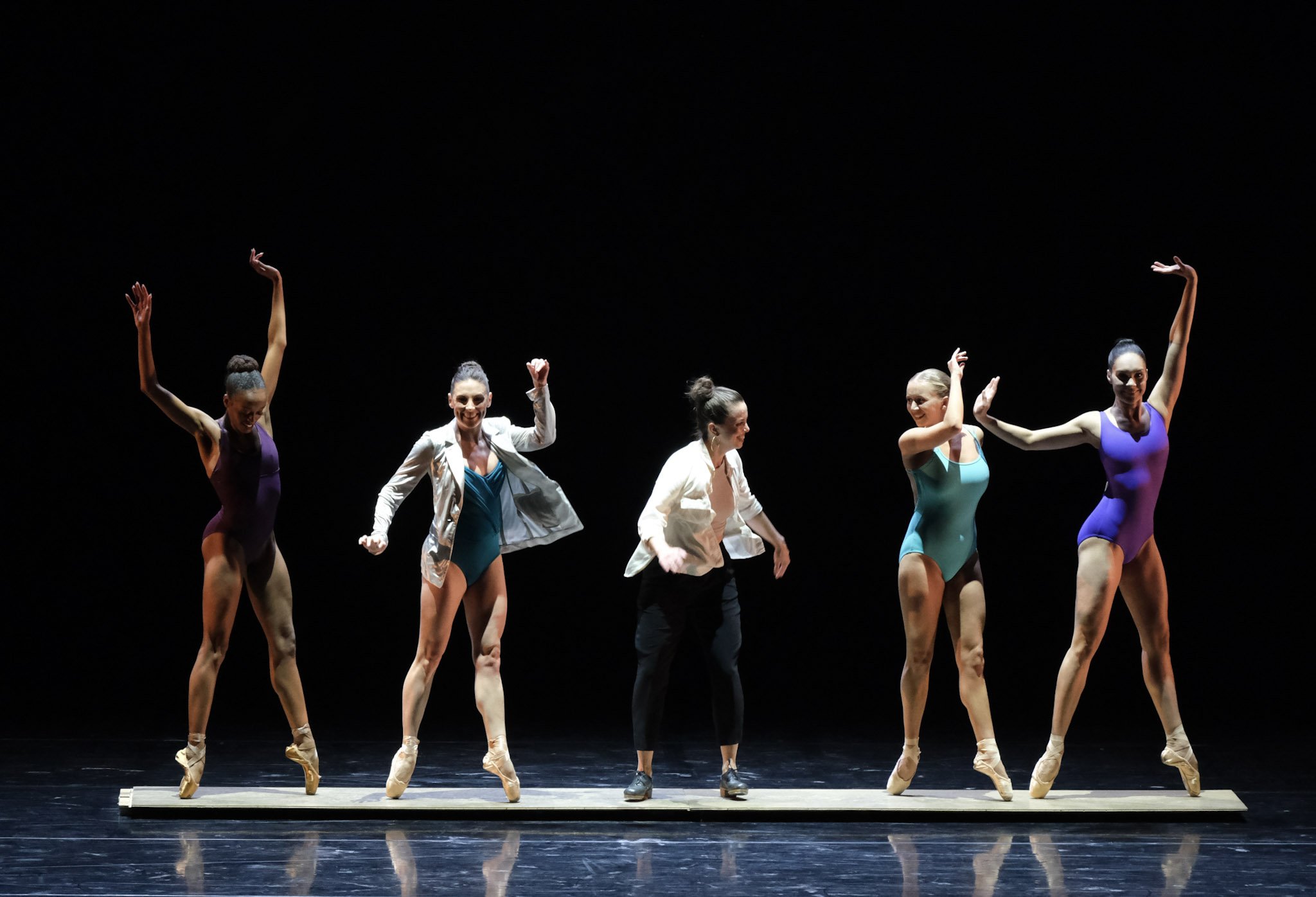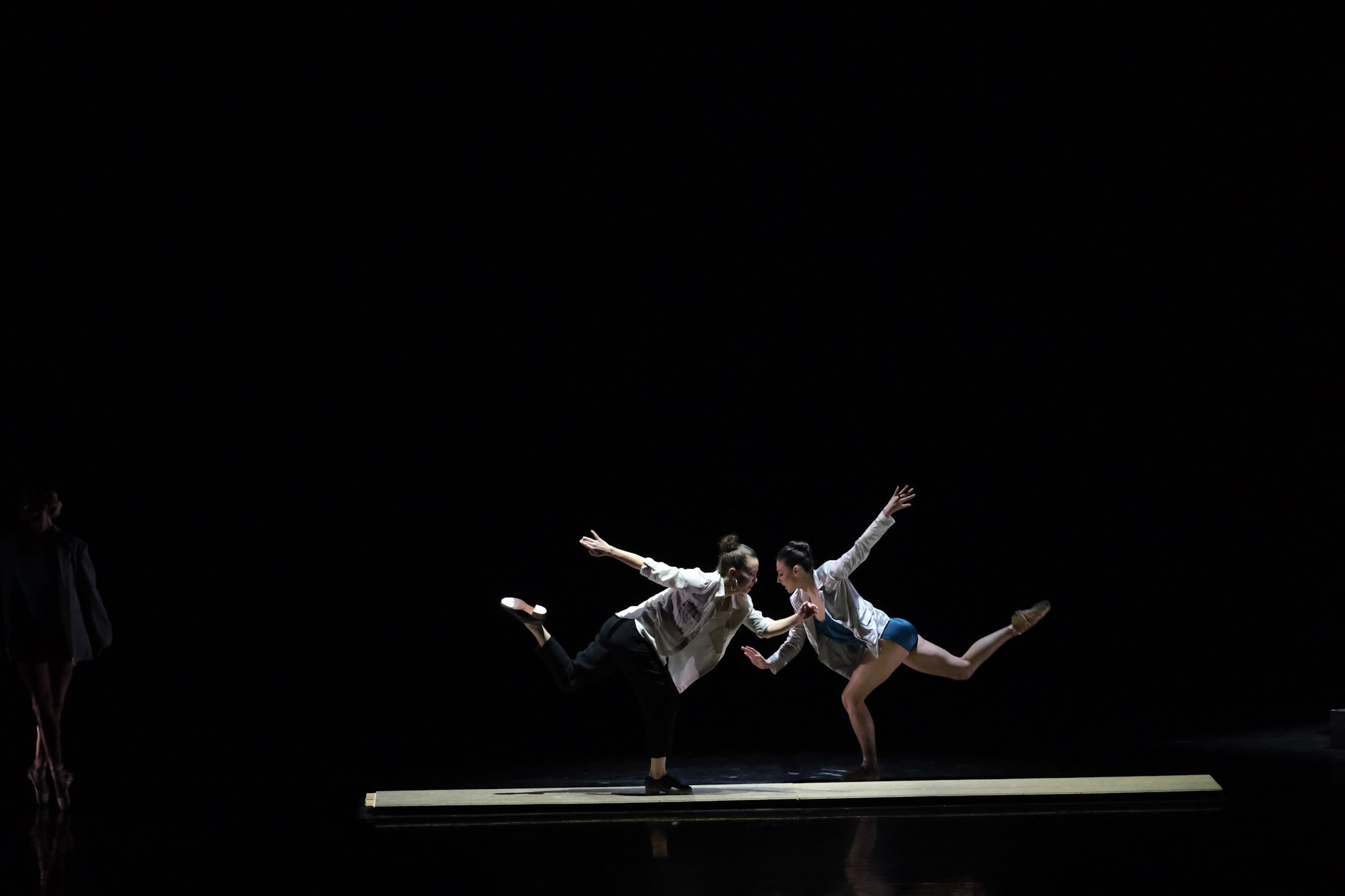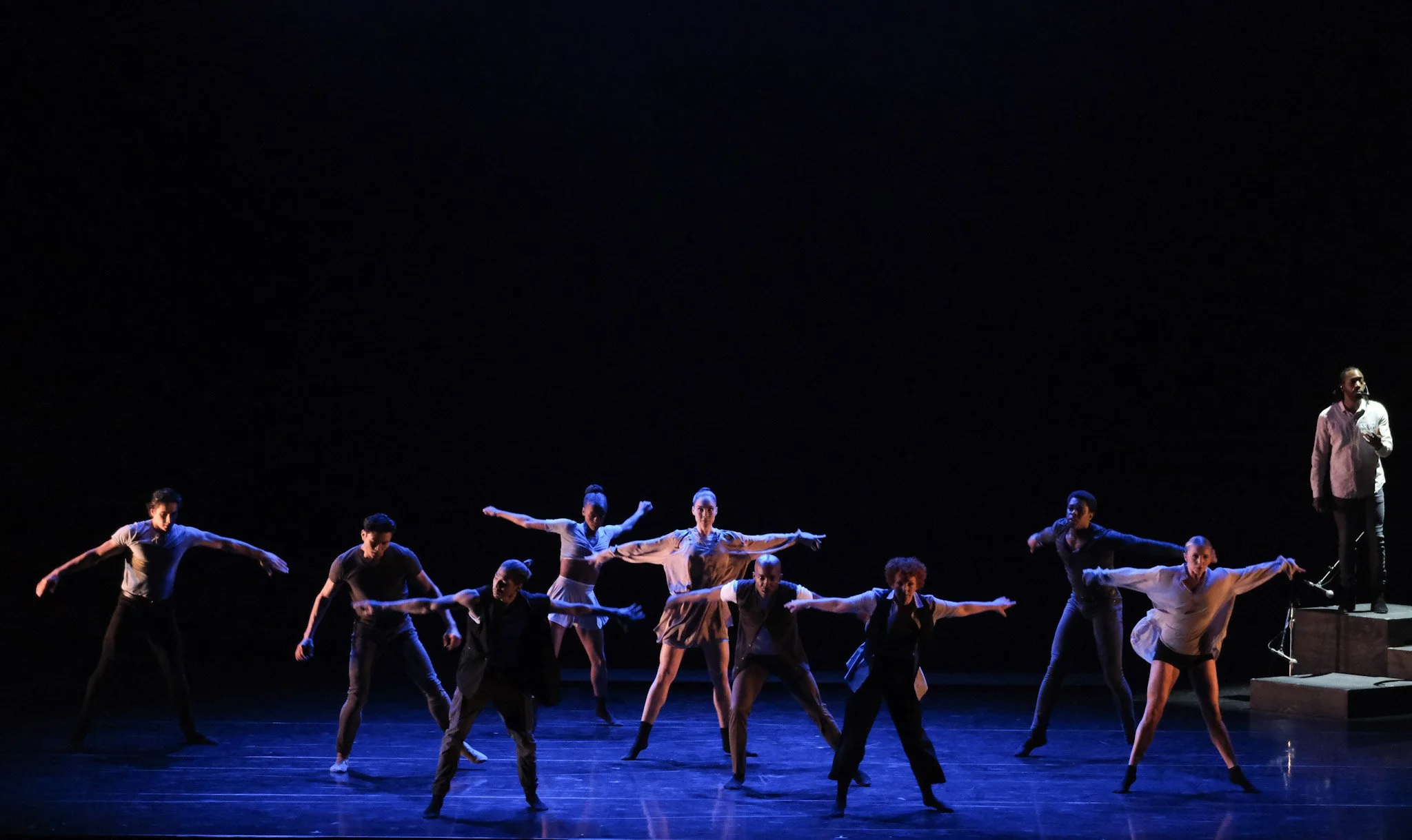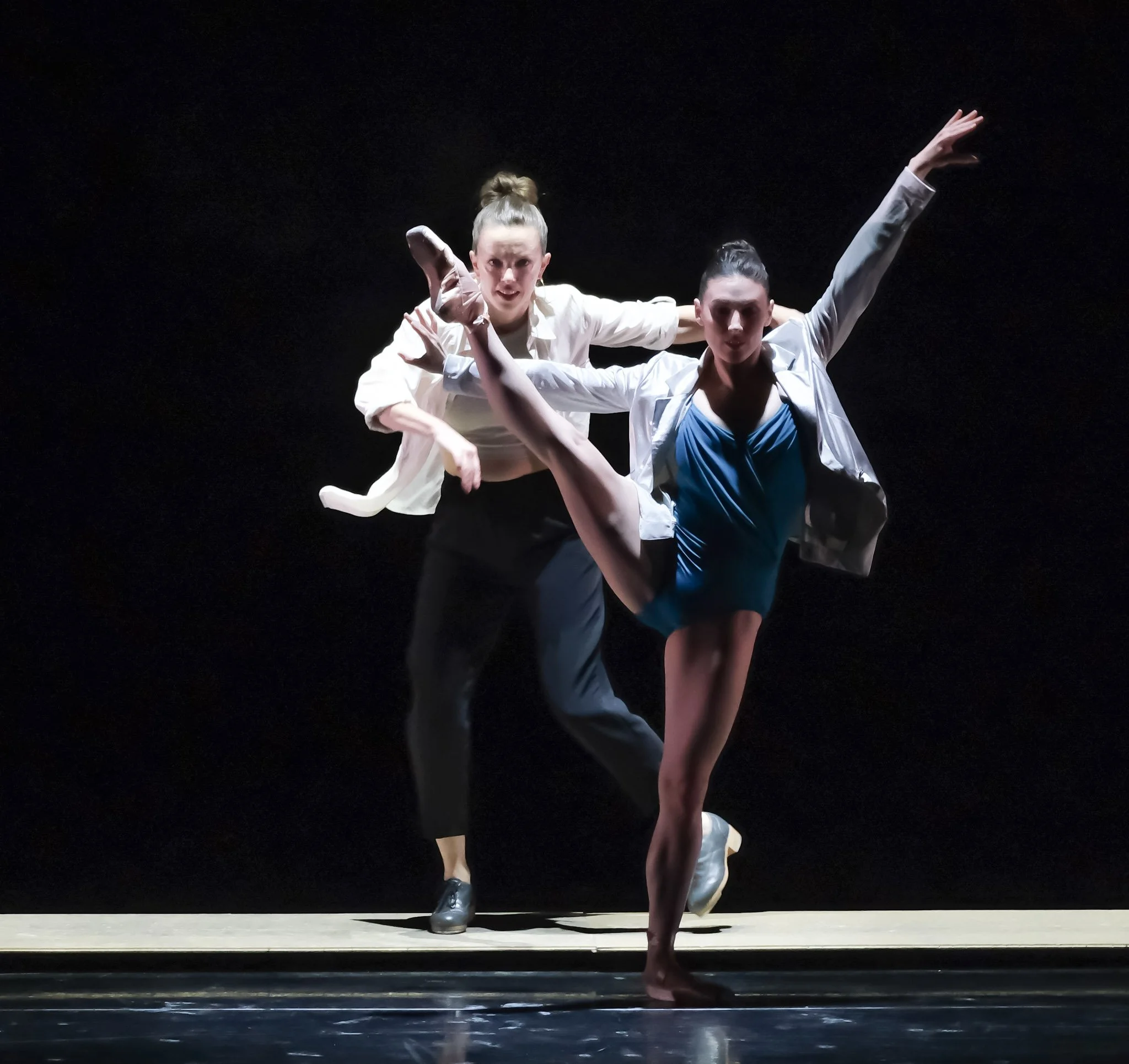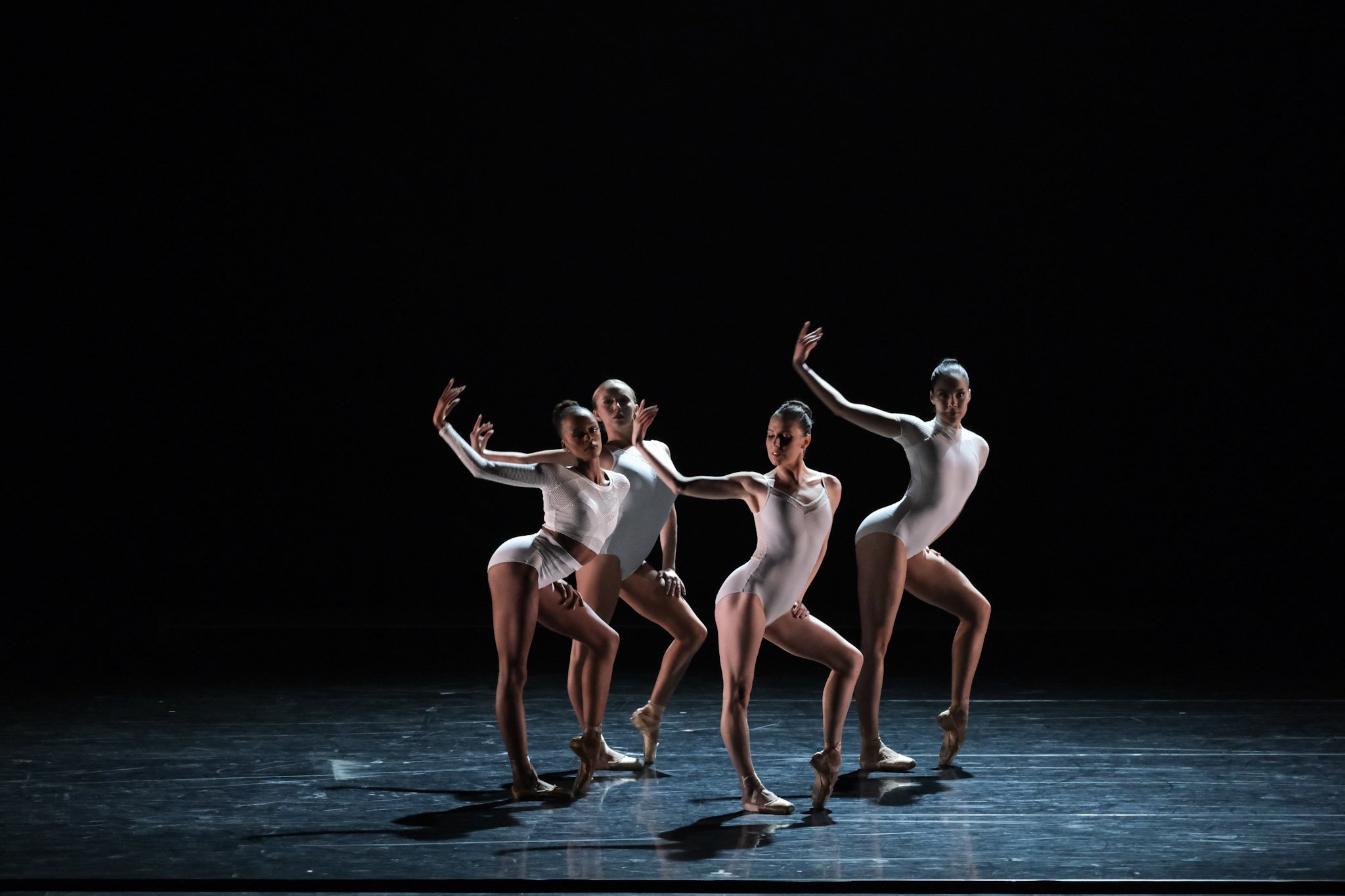Turn it Out with Tiler Peck Stops Time And Offers a Breathtaking Display of Movement
Ever since I saw Black Swan, I get overwhelmed every time I see a live dance and think about what the dancer has had to go through to get to this moment under the spotlight. When the girls do point and I think about their crumpled toes standing on top of wooden blocks within their shoes, I cringe and experience empathy pains as I imagine their cracked and bleeding toenails.
But I’ll be damned if they don’t look good while they’re doing it.
I didn’t know what to expect heading into Turn it Out with Tiler Peck & Friends. I’ve had the opportunity to check out some Broadway shows at the San Diego Civic Theater, but the only live dance shows I’ve ever seen were Riverdance and Shen Yun.
Turn it Out made its West Coast debut after selling out in New York and London and came to San Diego as part of the La Jolla Music Society (LJMS) dance series. Peck herself is a titan in the dance world, as well. She’s a principal dancer at the New York City Ballet and made her Broadway debut at age 11. She’s performed for Obama (twice), she has a Hulu documentary about her called Ballet Now, she curated and directed the inaugural Artists at the Center for New York City Center, she was in Forbes’ 30 under 30 for Hollywood entertainment, and that hardly even scratches the surface of her accomplishments.
So, yeah, she’s pretty much a badass.
As mentioned, I didn’t know anything about this show going into it. Actually, I hardly knew anything about her until I started writing this post. Going in blind, what I got was an incredible show from a visionary artist that I didn’t blink through the whole time.
Thousandth Orange
The show started with a classical ballet routine called Thousandth Orange. This is the only program in the show that doesn’t feature Peck as a dancer, but is also the only one totally choreographed by her. It made its world premiere at the Vail Dance Festival in 2019 and features dancers India Bradley, Chun-Wai Chan, Jovani Furlan, Christopher Grant, Mira Nadon, and Quinn Starner.
This program is a pretty standard ballet dance, featuring a string quartet and a piano guiding the dance as the dancers float effortlessly through the air. Set to music by Caroline Shaw, it’s a nod to Peck’s early career as a fledgling choreographer.
Photos via Ken Jacques.
The dance opens and closes with the dancers in the same pose that makes artwork out of their bodies, and while this was a fun watch, there wasn’t anything completely extraordinary about it, either.
Swift Arrow
After a brief pause, Peck officially arrived onstage to dance to a song composed by Jason Moran and choreographed by Alonzo King that debuted at the John F. Kennedy Center for the Performing Arts in 2021. Her dance partner, Roman Mejia, donned a barely-there outfit that showcased all of his muscles and the two owned the stage in perfect rhythm with the piano.
Photos via Ken Jacques.
The program directory for this dance says, “Om is the bow, the arrow is the individual being, and Brahman is the target. With a tranquil heart, take aim. Lose thyself in Him, even as the arrow is lost in the target.” This speaks to the relationship-esque push-pull between the two dancers, as well as referencing Mejia’s god-like appearance and costume.
Either way, there’s a relationship struggle here that comes with emotional depth through the performances and even the subtle moves were graceful and perfect.
The Barre Project, Blake Works II
Okay, I’m cheating a little bit here, because this is actually the last performance of the night after the intermission, but I disagree with the order. While I can’t change that in the performance itself, I can change that here, and since the third performance of the evening was the absolute best thing I’ve ever seen in my life, I’m just going to save it for last and get to it in a minute.
As to The Barre Project, which premiered digitally in 2021 and live in 2022 with Time Spell, Peck shares the stage with Mejia, Lex Ishimoto, and Brooklyn Mack. By “shares,” what really happens is they each run on and off stage and take turns showing off how beautifully they can move. Choreographed by William Forsythe, who has considerable renown in Europe, it’s a lot less edgy than other works he’s known for, but it’s a whirlwind of a performance all the same.
Photos via Ken Jacques.
The music, composed by James Blake, starts us out with a classic ballet barre dance with Peck by herself in moves that become increasingly more elaborate and advanced. Mejia does the same when he taps her out, and she returns to the stage before Ishimoto gets his chance to shine. Peck returns again, then Mack joins in before the piece alternates between the duets, trios, and solos with the barre coming in and out of sight. There’s also a brief segment on a screen with a closeup of hands dancing on the barre in a slowed-down section of the program.
This one is sure to be an audience pleaser, it just didn’t register to me as much of a finale performance as the dance prior to it, Time Spell: Subdivisions of Time and Space, and Intersections of Isolation and Community, Longing and Joy.
Time Spell
I have a million things to say about Time Spell and at the same time, I can’t seem to think of a single thing to say. I know for sure I want to say that I need a recording of this. I need to rewatch every intricate detail, I need to listen to every moment of the tap dance, and I need the recording of the music to play day in and day out. This dance was a sensory experience for my ears and my eyes. I didn’t blink the whole time, and I didn’t want it to end. It’s dances like this that made The New York Times call Peck “the ballerina who can stop time,” because it felt like the world itself had paused and the only thing that mattered was these 30 minutes.
Peck doesn’t get all the credit for choreographing this one, though. She shares that with tap dancer Michelle Dorrance and dancer/choreographer Jillian Meyers, as well as “collaboration with and improvisation by the dancers.”
Photos via Ken Jacques.
Dorrance started out this program with a tap dance that slowly increased in speed as the dancers came to the stage to join her. As mentioned above, Riverdance is the only other live dance I’ve seen, and tap has always been one of my favorite types of dance. She came to remind everyone why she owns her own dance company, and watching her move will forever live rent-free in my mind.
After her moment to shine, composers and musicians Aaron Marcellus and Penelope Wendlandt take the performance to an entirely different level in a mashup of music, ballet, tap, and contemporary dance. Every moment of it is spectacular, and I seriously need the vocals from Wendlandt on some sort of recording, stat.
Wendlandt uses a mixer to create the beats out of the music with her voice and uses the live recordings on a loop to interweave the entire track. I thought the vibrato in her voice would make the ceiling cave it, and at certain moments, it felt like she had physically taken hold of my heart and held me hostage.
Marcellus provided breathwork and vocals of his own as the dancers ate the stage with every step. Though it’s around 30 minutes or so, it casts a spell on the viewer that makes it seem hardly longer than 30 seconds. My mind is still trying to unravel every moment, which is why I’m damn-near desperate to get a recording to be able to watch it again over and over.
Everyone in this performance — Bradley, Chan, Dorrance, Grant, Ishimoto, Mejia, Meyers, Nadon, Peck, Starner, and Byron Tittle — deserves a three-page review, but alas, it can best be summed up as the most astounding performance of the night and one of the most incredible pieces of live dance I’ve ever had the honor of seeing in my life.

